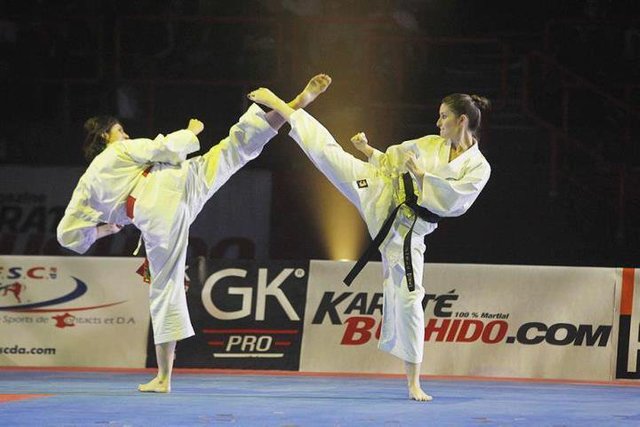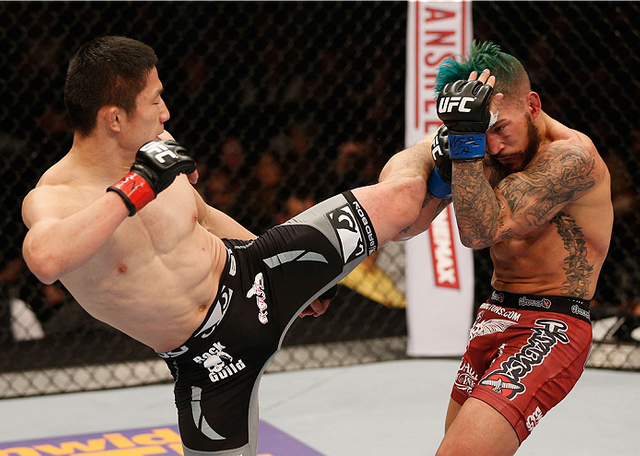WHAT YOU SHOULD KNOW ABOUT MODERN KARATE
THE ORIGIN
The teacher would eventually make known the book he wrote, for his followers and his disciples, in which his tiger appeared and titled it "RyukyuKempo: Tode" the seedite text inBukoyoShoen in the month ofNovember of the year 1922. There was already a precedent I could mark a before and after in this discipline.
In the year 1924, with the aim of expanding his beliefs in the world of martial arts, he devoted himself to instructing a group of students, not so numerous, of Keio, with the support of the university. Without realizing it or perhaps with all the purpose, this becomes the first karate university club in all of Tokyo and it is maintained to such an extent that it still exists today.
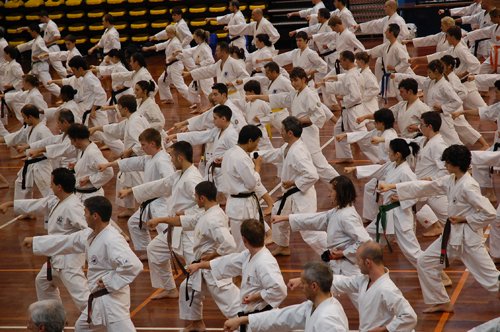
After this, the idea of university karate clubs was developed, giving rise to the existence, for today more than 300 clubs that linked to the different forms of training of schools in Japan, are clubs that support the basic structure of Japanese Karate contributing to the expansion of it.
As a consequence of the above and with all the new generation of these students who were training in a very focused way, given the impact generated by the new training method, Funakoshise surrounded a prestigious generation of students with names like Obata, MIKAMI, Matsumoto, Otake And Ohtsuka, all trained under his philosophy, who gave example of what the teacher knew.
*START OF CHANGES IN THE MODERN KARTE
After the orgien of modern karate, and all the evolution that it was taking until the name of Funakoshi was made known in a good part of Japan and other schools, in 1927 some discrepancies arose about the teaching method of Ju-Kumite (or better said, of the free combat), after they began to introduce modifications to ensure in some way the success and diffusion of karate.
In some way we tried to familiarize the traditional with new methods more adapted to the region and its traditions in combat; so Yoshitaka Funakoshi, who was the son of the Sensei Gichin Funakoshi, was responsible for bringing together a group of students to train with them and dedicated themselves completely, dedicated to the development of karate.
With Yoshitaka, important changes began to be made that became more noticeable during the 1930s and 1935s, mainly in Kumite. First developed the "GOHON KUMITE" known as the combat in five steps, where the attacker executes five attacks in a row and in advance, while the defender blocks them backing with a counterattack in the last defense.
In 1933 this gives structure to the so-called "KihonIpponKumite" (or the fight against a technique); In the following years, new forms applied by the heir of the teacher, such as the "Ju IpponKumite" or "Ju Kumite", which was established in 1935, appear.
From that moment it was decided to establish a central Dojo called "Hombu Dojo". A committee or "Shoto-Kai" was formed to establish a fund to build it; and on January 29, 1936, GichinFunakoshi himself inaugurated the Dojo in Tokyo, which he decided to call "Shoto-Kan"; from this is taken "Kan" which means place and Photo is the pseudonym that funakoshiacostumbraba to use to sign his poems (Shotoquiere deciraliteralmente: rippling of the pines under the wind).
In that same year, GichinFunakoshi worked and published a new book, which included the development that his pupil Yoshitaka had contributed to the arts. The book was entitled "Karate-Do Kyohan." From then on, it became clear that it was a completely new Japanese karate system. AGichinFunakoshif good at using a new ideogram to write Kara.
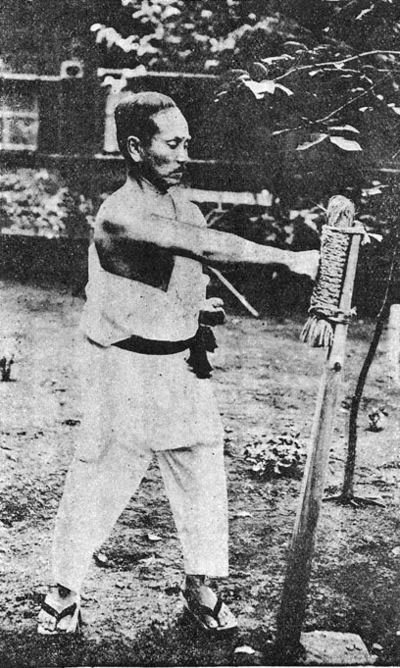
In the old ideogram could read as"Tang", in direct reference to the Chinese dynasty with the same name, but then, from the day of publication, the old name: "Chinese hands technique" was changed: "the way of empty hands "and how it is known and used today. In 1941, Japan entered the war and thanks to this, many of the oldest students went to military service to return again. And during a bombing of Tokyo, the Shoto-Kan Dojo was destroyed.
After the end of the war, in 1945, Yoshitakaa died due to tuberculosis, besides this, as history has taught us, General McArthur, then in front of the American armed forces, prohibited the training of Karate-Do and any other type of Japanese martial arts. Yes, in fact, this did not prevent that, although some training was carried out secretly, but it would not happen in the same way.
However, with everything and the ravages of the war and the forces of the invasion, little by little the students of GichinFunakoshi returned to their native Tokyo, and without giving much to talk about, began to discuss how they were going to liberate Karate- Do of the prohibition and how the reconstruction of the Dojo would be carried out.
THE RECONSTRUCTION OF DOJO
Ardua was the task, but not enough to lose the attempt; Thanks to this, the bureaucrats were convinced of their arguments and gave rise to the lifting of the prohibition of Karate-Do. This is how the Karate also became the only martial art that was allowed to practice after the war.
In 1951 the United States Air Force instituted a training program for martial arts. With this they were in charge of sending their physical training instructors to the Kodokan in Tokyo, for instruction in Judo, Karate, Aikido and other arts. Karate was taught under the leadership of the JKA, counting on Nakayama, Obata and Kamata as teachers. What resulted from this, was a somewhat disrupted expansion, because people who had had some limited training in Karate-Do, returned to the United States and began to teach what they knew, but in fact tinged with a style of their own.
Already by the mid-1950s it is said that there were more than 200 versions that were called (or still called) Karate styles, many of them perhaps conducted by people with little training. It is for this reason that MasatoshiNakayama, under the direction of funakoshi, created the training program for instructors and thus in this way ensure the quality instruction of true Karate-Do. From this program instructors were sent around the world to extend the Karate-Do of the JKA, known as shotokan.
*THE CREATOR OF MODERN KARATE
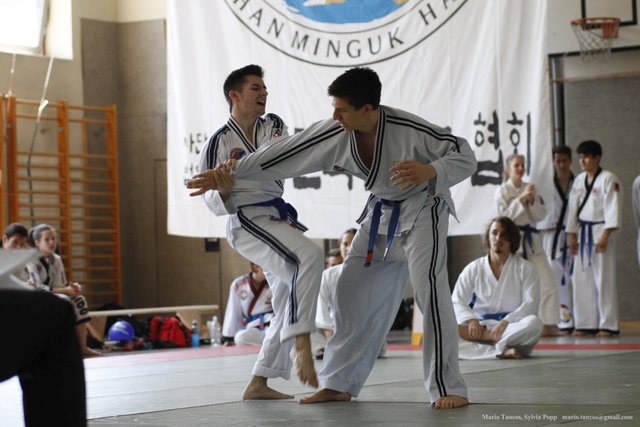
_
After the year 1945, when his son, Yoshitaka, died of tuberculosis, this was a blow for the teacher, since he was his assistant and the only person with whom he had placed all his confidence to be his successor. He then decided to go with his eldest son to Koshikawa . But the attacks of the war still did not stop; That year, during a bombing, his Shotokan Dojo was destroyed. In the year 1947 his wife dies. And after the war is over, Funakoshi decides to return to rebuild his Shotokan Dojo with what he had in his hands, his knowledge and those students who had not died in the battles against the United States.
But an inconvenience arises as a consequence of the invading acts produced by the war; by then the martial arts had been banned for a period of three years, under the command of the American Occupation Forces. It was then MasatoshiNakayama who goes into the history of modern karate as the man who played his own to convince the authorities to lift the ban on karate, achieving that after the war karate was the only martial art that was allowed to practice.
Nakayama received the gratitude of all the Karate practitioners, going from being someone unknown to having an important position in the world of Karate. In 1948 the Japan Karate Associaton (JKA) was founded, for which a new dojo was built and Funakoshi remained as the organization's chief instructor. In 1953 the Armed Forces of the United States asked the teacher to implant, together with his students, a system of instruction of this art to all the American military forces.
Gichin Funakoshi dies on April 26, 1957 in Tokyo. His funeral was held on May 10. A monument in his memory is currently located in the Zen Monastery of Engaku-ji in Kamakura; It bears the inscription: "Karate Ni SenteNashi" (In karate there is no first attack).


